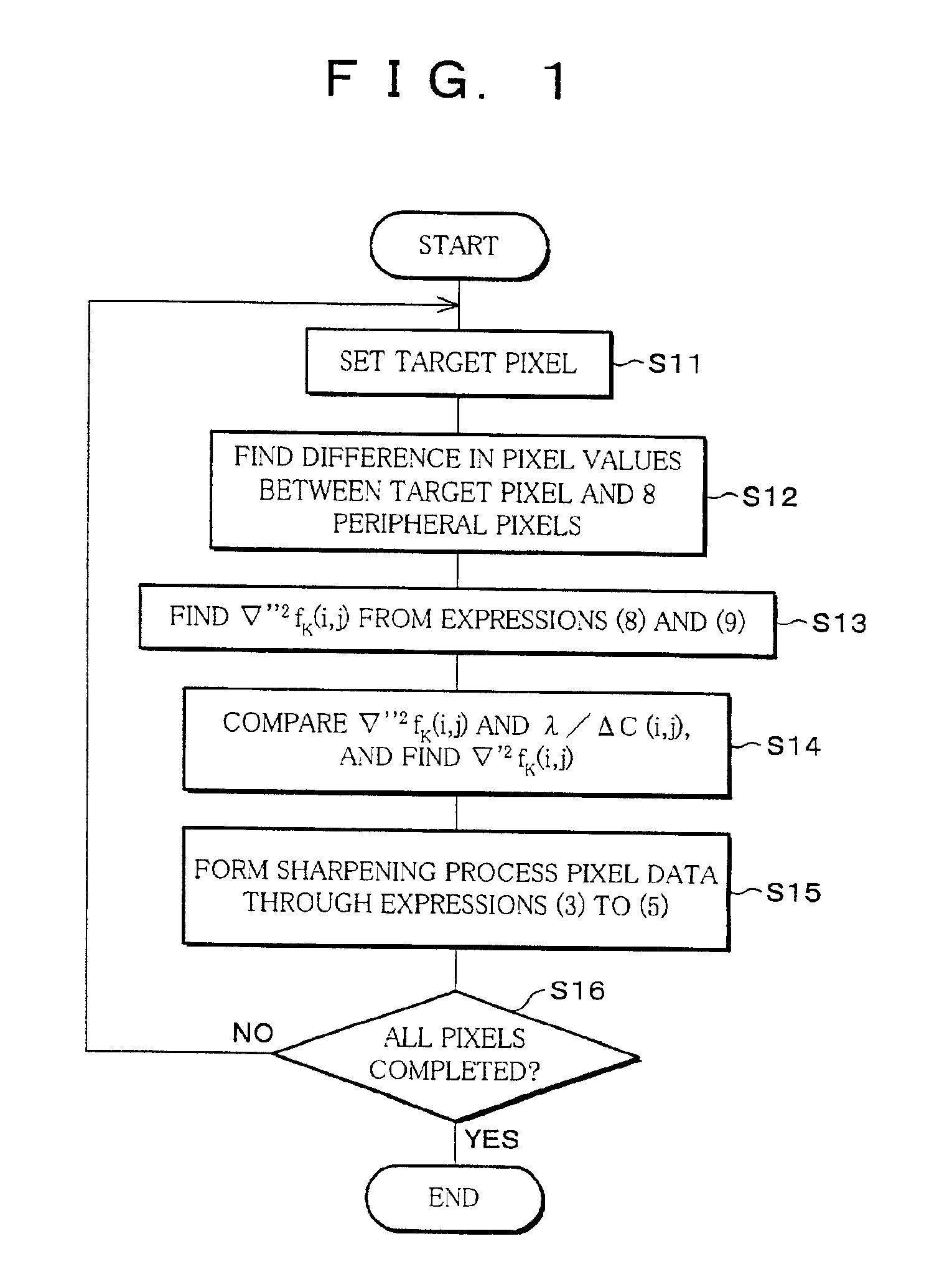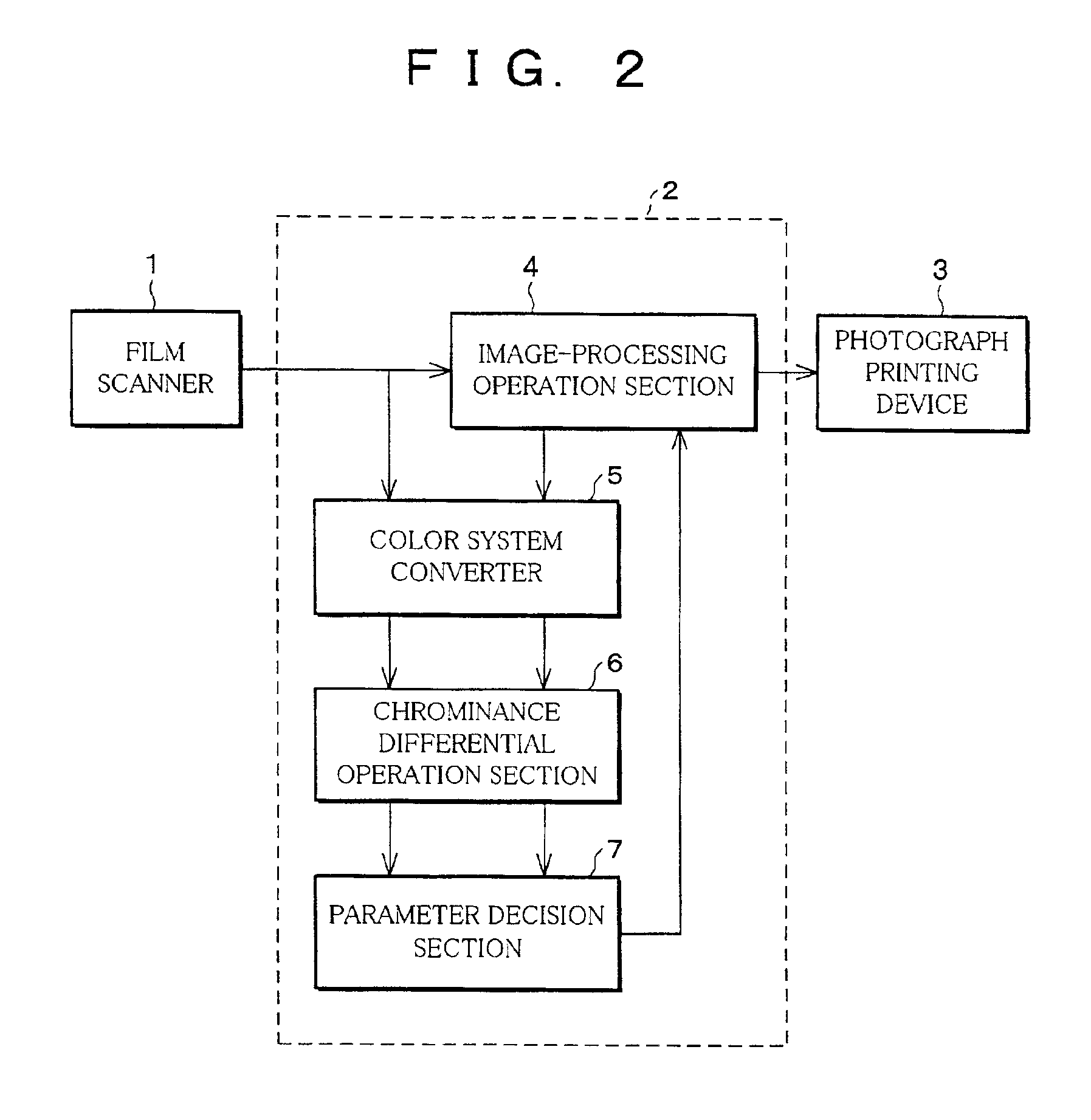Image-processing method and recording medium in which such an image-processing method is recorded
a technology of image processing and recording medium, applied in the field of image processing method, can solve the problems of difficult recognition for users, affecting the quality of image acquisition, so as to prevent the occurrence of emphasized noise and occurrences
- Summary
- Abstract
- Description
- Claims
- Application Information
AI Technical Summary
Benefits of technology
Problems solved by technology
Method used
Image
Examples
Embodiment Construction
[0047]Referring to FIGS. 1 through 6, the following description will discuss one embodiment of the present invention.
[0048]FIG. 2 is a block diagram that shows a schematic construction of an image output system in accordance with the embodiment of the present invention. The image output system is constituted by a film scanner 1, an image processor 2 and an photograph-printing device 3.
[0049]The film scanner 1, for example, directs light from a light-source onto a negative-working film that is a photographic film, and reads an image recorded in the negative-working film by receiving the transmitted light by a CCD (Charge Coupled Device), etc. The film scanner 1 outputs the image data thus read to the image processing device 2 for each of the red component, green component and blue component in a separate manner.
[0050]Based upon image data processed by the image processing device 2, the photograph-printing device 3 prints an image on photographic paper by exposing the photographic pap...
PUM
 Login to View More
Login to View More Abstract
Description
Claims
Application Information
 Login to View More
Login to View More - R&D
- Intellectual Property
- Life Sciences
- Materials
- Tech Scout
- Unparalleled Data Quality
- Higher Quality Content
- 60% Fewer Hallucinations
Browse by: Latest US Patents, China's latest patents, Technical Efficacy Thesaurus, Application Domain, Technology Topic, Popular Technical Reports.
© 2025 PatSnap. All rights reserved.Legal|Privacy policy|Modern Slavery Act Transparency Statement|Sitemap|About US| Contact US: help@patsnap.com



